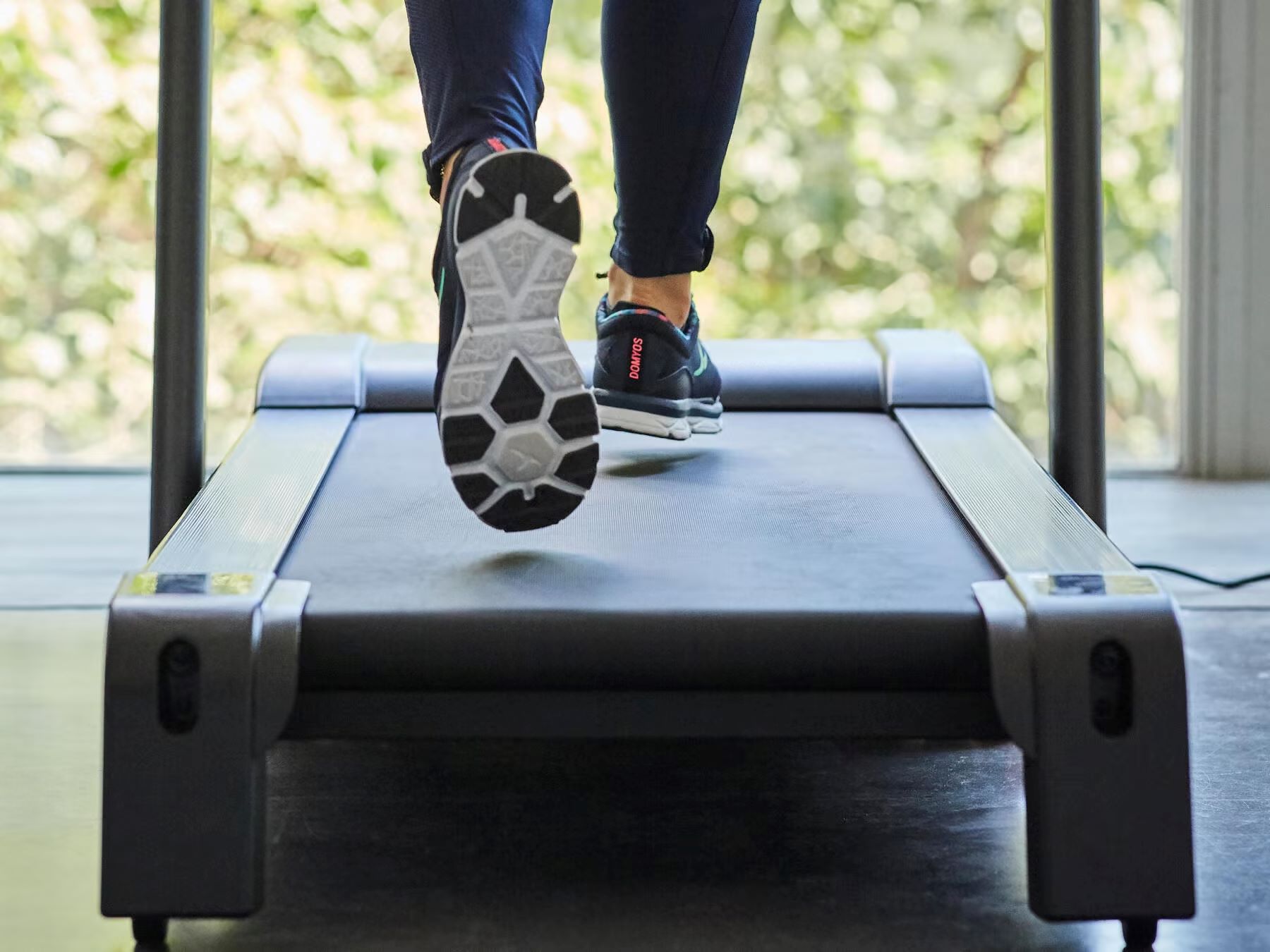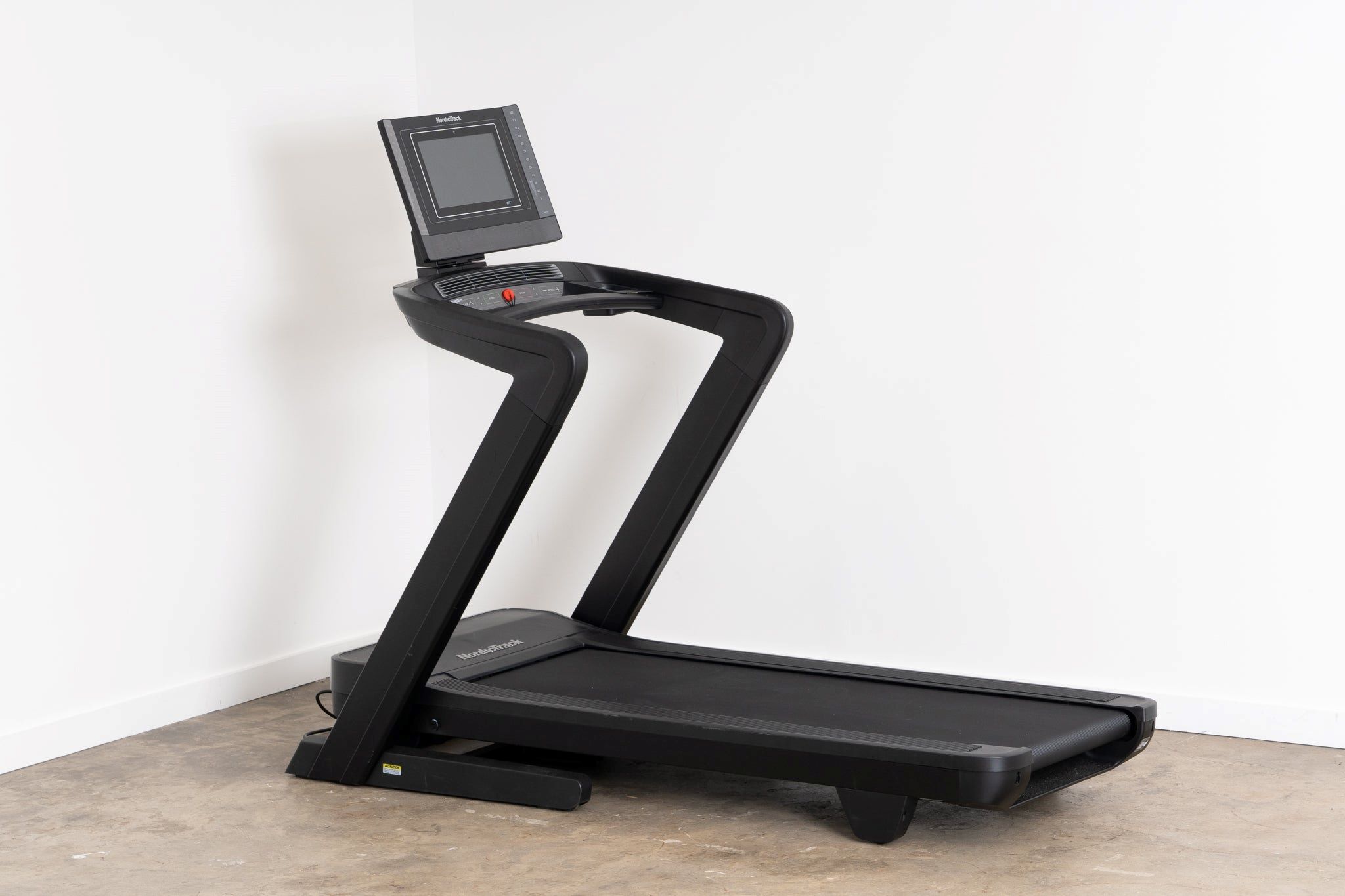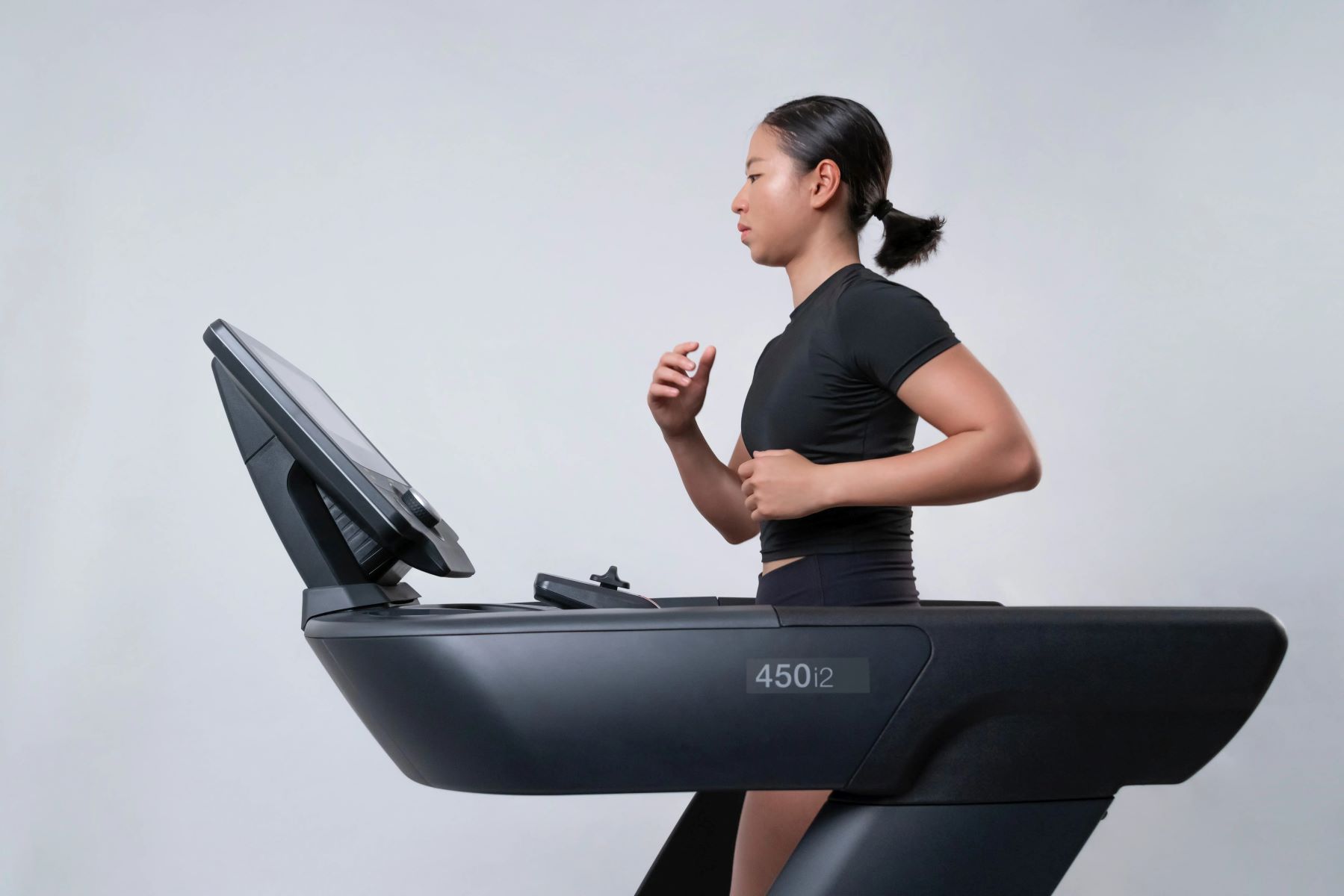

Featured
What Do Numbers On Treadmill Mean
Modified: January 22, 2024
Discover what the numbers on a treadmill mean and how they can improve your workout. Explore our featured treadmills for a better fitness experience.
Introduction
When it comes to working out, treadmills are a popular choice for many fitness enthusiasts. With their convenience, versatility, and ability to provide an effective cardiovascular workout, treadmills have become a staple in both gyms and homes. But have you ever wondered what the numbers on a treadmill mean? Understanding these numbers can help you maximize your workout and track your progress.
In this article, we will delve into the various numbers you’ll commonly find on a treadmill display. From speed and incline to distance and calories burned, each number represents a different aspect of your workout. By understanding what these numbers mean and how to use them, you can tailor your treadmill sessions to meet your fitness goals.
So, whether you’re a beginner or a seasoned runner, this article will serve as your guide to deciphering the numbers on a treadmill. Get ready to take your workouts to the next level and make the most out of your treadmill experience!
Benefits of Using a Treadmill
Using a treadmill offers a multitude of benefits for individuals of all fitness levels. Whether you’re a beginner or an experienced athlete, incorporating treadmill workouts into your routine can have a significant impact on your overall health and well-being. Here are some of the key benefits of using a treadmill:
- Convenience: One of the major advantages of using a treadmill is the convenience it offers. With a treadmill at home or a gym, you can exercise regardless of the weather or time constraints. You have the flexibility to work out whenever it suits you, making it easier to stick to your fitness routine.
- Cardiovascular Fitness: Treadmill workouts are excellent for improving cardiovascular fitness. The ability to adjust the speed and incline allows you to increase the intensity of your workout, effectively raising your heart rate and improving your cardiovascular endurance over time.
- Weight Management: Treadmill workouts can help with weight management by burning calories. Running or walking on a treadmill can effectively burn a significant number of calories, making it an excellent choice for those looking to shed pounds or maintain a healthy weight.
- Joint-Friendly: Unlike outdoor running, treadmill running provides a more cushioned surface that reduces the impact on your joints. This makes treadmill workouts suitable for individuals with joint issues or those who prefer a low-impact exercise option.
- Variety of Workouts: Treadmills offer a variety of workout options to keep your fitness routine engaging and challenging. From interval training to hill workouts, you can customize your treadmill sessions to target specific fitness goals, such as speed, endurance, or calorie burn.
These are just a few of the many benefits of using a treadmill. Whether you’re looking to improve your cardiovascular fitness, manage your weight, or simply enjoy the convenience of exercising at home, incorporating treadmill workouts into your routine can help you achieve your fitness goals.
Understanding the Numbers on a Treadmill
When you step onto a treadmill, you’ll notice a variety of numbers displayed on the console. Each number represents an important metric that can help you track your progress and improve your workout. Here are the key numbers you’ll encounter on a treadmill and what they mean:
- Speed: The speed number indicates how fast the treadmill belt is moving. It is typically measured in miles per hour (mph) or kilometers per hour (km/h). Adjusting the speed allows you to control the intensity of your workout and cater it to your fitness level.
- Incline: The incline number represents the angle of the treadmill belt. It indicates the level of hill simulation and can range from 0% (flat) to a steep incline. Increasing the incline challenges your leg muscles and adds intensity to your workout.
- Distance: The distance number indicates the total distance you have covered during your workout. It is usually displayed in miles or kilometers and can help you track your progress over time.
- Time: The time number shows the duration of your workout. It helps you keep track of how long you’ve been exercising and is essential for monitoring your workout duration or following a specific workout plan.
- Calories Burned: The calories burned number estimates the number of calories you have burned during your workout. It serves as a helpful metric for individuals looking to manage their weight or track their calorie expenditure.
- Heart Rate: Some treadmills come equipped with heart rate monitors or are compatible with wearable heart rate trackers. The heart rate number shows your beats per minute (bpm) and provides valuable insight into your cardiovascular fitness and workout intensity.
- Programs: Many treadmills offer pre-programmed workouts that vary in speed, incline, and duration. These programs can help add variety to your workouts and cater to specific fitness goals, such as fat burning, interval training, or hill climbing.
By understanding what each number represents and how to use them effectively, you can customize your treadmill workouts to meet your specific goals and make the most out of your exercise sessions.
Speed
Speed is a crucial metric displayed on a treadmill and represents how fast the treadmill belt is moving. It is typically measured in miles per hour (mph) or kilometers per hour (km/h). Adjusting the speed allows you to control the intensity of your workout and cater it to your fitness level.
When it comes to speed, it’s important to find a pace that challenges you but is also sustainable. For beginners, starting with a comfortable walking speed and gradually increasing it over time is a great way to build endurance and improve cardiovascular fitness.
For more experienced runners, increasing the speed can help you work on your running efficiency and pace. Interval training, where you alternate between periods of high-intensity running and recovery, is an effective way to improve speed and endurance.
Furthermore, some treadmills offer preset speed programs that automatically adjust the speed at specific intervals. These programs can be beneficial for individuals looking to follow a structured training plan or add variety to their workouts.
Remember to listen to your body and choose a speed that challenges you without causing excessive strain. As you progress and your fitness level improves, gradually increase the speed to continue pushing yourself and achieving new milestones.
By utilizing the speed feature on a treadmill effectively, you can tailor your workouts to your desired intensity, whether that’s a leisurely walk or a high-intensity sprint. Experiment with different speeds to find your sweet spot and elevate your fitness journey.
Incline
The incline feature on a treadmill allows you to adjust the angle of the treadmill belt. It represents the level of hill simulation and can range from 0% (flat) to a steep incline. Incorporating incline into your workouts can add a new dimension of challenge and help you target different muscle groups.
Running or walking on an incline engages your leg muscles, particularly your calves, hamstrings, and glutes, to a greater extent than exercising on a flat surface. This additional resistance can help you build strength and endurance, making your workouts more effective.
Increasing the incline mimics the experience of running or walking uphill, providing a greater cardiovascular challenge and burning more calories. It can also help improve your running form and stride length, making you a more efficient runner.
Additionally, adjusting the incline on a treadmill can help reduce the impact on your joints. The softer surface and reduced force of gravity take some pressure off your knees and ankles, making it a safer option for individuals with joint issues or those who prefer a low-impact workout.
When incorporating incline into your workouts, start by setting a moderate incline and gradually increase it over time as your strength and endurance improve. Experiment with different incline levels to find the right challenge for your fitness level.
Interval training on an incline is an effective way to vary your workouts and boost your fitness. Alternating between periods of running or walking on an incline and flat surfaces can help increase intensity, elevate your heart rate, and burn more calories.
However, it’s important to note that running on a high incline for extended periods can put additional stress on your body. Listen to your body and adjust the incline to a level that is challenging yet comfortable for you.
The incline feature on a treadmill adds versatility to your workouts and simulates the experience of running or walking on different terrains. Incorporate incline training into your routine to improve strength, endurance, and overall fitness.
Distance
The distance metric on a treadmill represents the total distance you have covered during your workout. It is typically displayed in miles or kilometers and can be a helpful tool to track your progress and set goals.
Tracking distance allows you to monitor how far you have run or walked, providing a tangible measure of your achievements. It can help you stay motivated and work towards increasing your endurance and covering greater distances over time.
Knowing the distance you’ve covered can be especially useful if you’re training for a race or working towards a specific fitness goal. You can set targets for yourself and gradually increase your distance as your fitness level improves.
Many treadmills allow you to set a target distance for your workout. This feature can be beneficial if you want to challenge yourself or follow a specific training plan. As you approach the designated distance, it can serve as motivation to keep pushing and accomplish your goals.
In addition, tracking distance is a great way to monitor your consistency in your running or walking routines. By keeping a record of the distances you’ve covered, you can ensure that you’re maintaining a steady and progressive training program.
Understanding the distance you’ve covered can also be helpful for tracking your calorie burn. By knowing how far you’ve run or walked, you can estimate the number of calories you’ve burned based on your weight and the intensity of the workout.
Overall, the distance metric on a treadmill provides a tangible measure of your progress and helps you set and achieve fitness goals. Whether you’re training for a race, aiming to improve your endurance, or simply looking to stay consistent with your workouts, tracking distance can be a valuable tool in your fitness journey.
Time
Time is an essential metric displayed on a treadmill that indicates the duration of your workout. It reflects how long you have been exercising and is crucial for monitoring your workout duration or following a specific workout plan.
Tracking time allows you to set goals and manage your workout schedule effectively. It can help you ensure that you’re devoting an adequate amount of time to your fitness routine, whether it’s a quick 20-minute session or a longer endurance workout.
By monitoring the time spent on the treadmill, you can also track your progress and gradually increase your workout duration. As your fitness level improves, you can aim to lengthen your workouts, challenging yourself to go farther or faster.
Time can be particularly important if you’re following a specific training plan or targeting a certain heart rate zone. Many exercise programs prescribe specific durations for each workout to ensure optimal results and prevent overexertion.
Furthermore, tracking the time spent on a treadmill can help you manage your overall fitness routine. You can allocate a certain amount of time for cardiovascular exercises and ensure that you’re balancing it with other forms of exercise, such as strength training or flexibility exercises.
Some treadmills offer interval training programs based on time. These programs guide you through timed intervals of high-intensity exercise followed by rest or recovery periods. Timing is critical to achieving the desired intensity and maximizing the effectiveness of these workouts.
Whether you’re a beginner or an experienced athlete, paying attention to the time metric on a treadmill is an essential aspect of optimizing your workout. It allows you to track your progress, manage your workout schedule, and ensure that you’re devoting the right amount of time to your fitness goals.
Calories Burned
The calories burned metric on a treadmill provides an estimate of the number of calories you have burned during your workout. It serves as a helpful tool for individuals looking to manage their weight or track their calorie expenditure.
When you exercise on a treadmill, your body utilizes energy, and this energy expenditure results in burning calories. The calories burned metric takes into account factors such as your weight, exercise intensity, and workout duration to estimate the number of calories you’ve burned.
Knowing the number of calories burned can be motivating and serve as a tangible measure of your effort and progress. It allows you to set calorie burn goals and track your progress towards those goals.
Using the calories burned metric on a treadmill can also provide valuable feedback on the effectiveness of your workout. By comparing the calorie burn from different workouts or adjusting the intensity and duration, you can optimize your workouts to achieve specific weight loss or maintenance goals.
It’s important to note that the calories burned metric is an estimate and may not be completely accurate for everyone. Factors such as individual metabolism, genetics, and body composition can influence the actual number of calories burned.
Nevertheless, tracking calories burned can still be a helpful guide and assist in managing your overall calorie balance. It can provide insight into your energy expenditure and help you make informed decisions about your diet and exercise routine.
Additionally, some treadmills offer preset programs based on calorie burn goals. These programs automatically adjust the speed, incline, or duration to help you achieve a specific calorie burn target.
Overall, the calories burned metric on a treadmill provides valuable information about your energy expenditure during workouts. By utilizing this metric, you can plan and track your calorie burn, making progress towards your weight management or fitness goals.
Heart Rate
The heart rate metric on a treadmill provides valuable insight into your cardiovascular fitness and workout intensity. Some treadmills come equipped with heart rate monitors or are compatible with wearable heart rate trackers.
Heart rate is measured in beats per minute (bpm) and represents how fast your heart is beating during exercise. Monitoring your heart rate can help you gauge the intensity of your workout and ensure that you’re working within your target heart rate zone.
Knowing your target heart rate zone is important because it allows you to optimize your workout for specific goals. Different heart rate zones, such as fat-burning or cardio zones, offer varying benefits and can be used to tailor your workout to your fitness objectives.
If your goal is to burn calories and improve cardiovascular endurance, you can aim to exercise within the higher end of your target heart rate zone. If you’re working on fat burning or improving aerobic capacity, you might want to stay within the lower end of your target heart rate range.
By monitoring your heart rate during workouts, you can ensure that you’re exercising at an appropriate intensity level. It helps prevent overexertion while still challenging your cardiovascular system and promoting fitness gains.
Heart rate monitoring can also provide feedback on your overall cardiovascular fitness. Regularly tracking your heart rate during workouts allows you to observe changes over time. As your fitness level improves, you may notice a decrease in resting heart rate and the ability to maintain a lower heart rate during workouts.
Some treadmills offer heart rate-based programs that automatically adjust the speed and incline to keep you in your target heart rate zone. These programs can be especially helpful for individuals looking to maximize the cardiovascular benefits of their workouts.
Remember, your heart rate is a personal measure that can vary depending on factors like age, fitness level, and health conditions. Consult with a healthcare professional or fitness expert to determine your target heart rate range and ensure you’re exercising safely.
Overall, monitoring your heart rate on a treadmill provides important information about your workout intensity and cardiovascular fitness. It allows you to optimize your workouts, make progress towards specific goals, and ensure you’re exercising at a safe and effective level.
Programs
Treadmills often come equipped with a variety of built-in workout programs designed to add variety and challenge to your exercise routine. These pre-programmed workouts are tailored to specific fitness goals and can help you achieve optimal results.
Programs on a treadmill vary in terms of their focus, intensity, and duration. They typically include options such as interval training, hill workouts, fat-burning routines, and more. Each program is designed to target different aspects of your fitness, providing a well-rounded approach to your workouts.
Interval training programs are particularly popular on treadmills. These workouts incorporate alternating periods of high-intensity efforts followed by recovery periods. By alternating between high intensity and recovery, you can maximize calorie burn, improve cardiovascular fitness, and increase endurance.
Hill programs simulate the experience of running or walking uphill. By incorporating incline variations, these programs challenge your leg muscles, increase your workout intensity, and enhance cardiovascular strength.
Fat-burning programs typically focus on maintaining a moderately challenging pace for an extended period. These workouts aim to optimize calorie burn and improve aerobic capacity.
In addition to these programs, many treadmills offer customizable options where you can create your own workout or adjust existing programs to match your fitness level and goals. You can modify factors such as speed, incline, and duration to personalize your workout experience.
Using the programs on a treadmill can be beneficial for various reasons. They add variety and excitement to your workouts, eliminating the boredom often associated with repetitive routines. They also provide structure and guidance, making it easier to stay on track and achieve your fitness objectives.
Furthermore, treadmill programs can be especially helpful for beginners who are new to running or walking. They offer a structured approach, ensuring that you gradually progress and build endurance without pushing yourself too hard too soon.
However, it’s important to remember that treadmill programs serve as a guide and should be adjusted based on your individual fitness level and comfort. Listen to your body, make modifications as needed, and consult with a fitness professional if you have any concerns or specific goals.
Incorporating treadmill programs into your routine allows you to take full advantage of the features and benefits of your machine. Experiment with different programs to discover what works best for you, and enjoy the variety and efficiency that they bring to your workouts.
Conclusion
Understanding the numbers on a treadmill is key to maximizing your workout and reaching your fitness goals. The various metrics, such as speed, incline, distance, time, calories burned, heart rate, and programs, provide valuable information that can guide and enhance your exercise routine.
By utilizing the speed feature, you can adjust the intensity of your workout and challenge yourself at a pace that suits your fitness level. Incline training adds resistance and targets different muscle groups, helping you build strength and endurance. Tracking distance allows you to set goals and monitor your progress, while monitoring time ensures that you dedicate enough time to your workouts.
The calories burned metric provides a useful estimate of the energy expenditure during your treadmill sessions, aiding in weight management and tracking calorie balance. Monitoring your heart rate helps you gauge the intensity of your workout and workout within your target heart rate zone.
Lastly, treadmill programs offer a variety of structured workouts that cater to specific fitness goals, adding variety and structure to your routines. Whether you’re a beginner or a seasoned athlete, these programs provide guidance and help you optimize your workouts.
Remember, always listen to your body and make adjustments as necessary. Consult with a fitness professional if you have specific goals or concerns. With a solid understanding of the numbers on a treadmill, you can make informed choices, improve your fitness level, and enjoy the benefits of this versatile fitness equipment.









